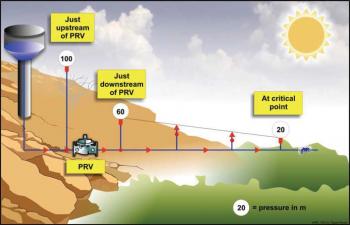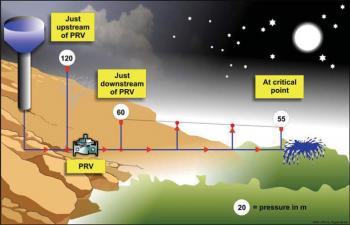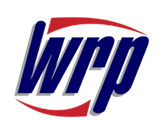12 Years of Advanced Pressure Management in Johannesburg
IN MANY PARTS OF South Africa, pressure management is by far the most important water demand management (WDM) intervention and is often the first to be implemented.
Although it must be acknowledged that this is not the answer in every case, it is often one of the most cost-effective measures for reducing leakage and wastage that can be considered.
South Africa was one of the first countries in the world to adopt the principles of advanced pressure control, initially developed in the UK for its water industry in the early 1990s. The techniques used in the UK were first presented in South Africa in 1997, and following a series of small pilot projects, the full-scale Johannesburg Pressure Management Project was completed in 1999, involving the design and commissioning of almost 50 advanced pressure control installations (Mckenzie, Wegelin & Rhoner, 2000). Although this project was completed more than 12 years ago, the City of Johannesburg has since then been maintaining and operating the equipment to ensure that the benefits of advanced pressure control remain sustainable. One of the original controllers was recently serviced with a new battery – after eight years of continuous use.
“We first introduced advanced pressure control in 1998 and currently have over 30 advanced pressure management installa- tions, comprising more than 100 control valves equipped with various forms of electronic pressure controllers. Advanced pressure control is an integral component of our overall WDM strategy and has been highly effective in managing leakage in many of our high-pressure areas,” explains Etienne Hugo, general manager: Operations at Johannesburg Water.
Following the success of the Johannesburg project, one of the most ambitious pressure management projects undertaken anywhere in the world was designed and commissioned in 2001 in Khayelitsha for the City of Cape Town (Mckenzie, 2002). At the time, this was the largest installation of its type in the world and was the forerunner of the even larger installation located in the Emfuleni Local Municipality (Wegelin & Mckenzie, 2005) – and both re- ceived national and international recognition. The most recent large-scale advanced pres- sure management installation in South Africa was commissioned in Mitchell’s Plain for the City of Cape Town in November 2008 and was the third large-scale pressure management in- stallation of its type to be constructed in South Africa (Meyer, Wright & Englebrecht, 2009). Each of these three installations controls the supply of water to approximately 500 000 residents from a single supply point. It is in- teresting to note that South Africa is one of the few countries in the world where such installations are viable, owing to the nature of the water supply systems and the relatively high service levels.
Concepts of pressure management
Water supply systems worldwide are generally designed to provide water to consumers at some agreed level of service, which is often defined as a minimum level of pressure at the critical point: the point of lowest pressure in the system. In addition, there may be certain fire-flow requirements that can override normal consumer requirements. The systems are designed to accommodate these pressure and flow requirements during the period of peak demand, which would normally occur at a specific time of day and during a particular month in the year. In other words, the systems are designed to provide the appropriate supply volumes and pressure during a very short period in the year and for the remainder of the time the systems tend to operate at pressures that are significantly higher than required. Even within the same system, there will be areas of high pressure owing to topography and/or distance from the supply point, with the result that many parts of a supply area will operate at pressures significantly higher than required in order to ensure that there is sufficient pressure at the one critical point.
Managing water pressures in a supply area is not a simple issue and there are a great many aspects to consider. The common factor in every system is the fact that leakage is driven by pressure, and if the pressure is increased the leakage will also increase. If the water pressure in a system can be reduced, even for a short period during times of low demand, the water leakage from the system will be reduced.
Many theories have been postulated to explain the pressure-leakage relationships in a municipal water supply system, with the fixed area variable area discharge (FAVAD) being the most widely accepted approach. Contrary to popular belief worldwide, the origin of the FAVAD theory can be traced back to a paper by Ledochowski (1956), who completed his research in none other than the City of Johannesburg. It is therefore very fitting that Jo- hannesburg should have been the first city in South Africa to implement advanced pressure control on such a grand scale.
In order to reduce leakage through pressure management it is necessary to reduce the water pressure without compromising the level of service with regard to consumers and fire fighting. As mentioned previously, most systems are designed to provide a certain minimum level of service in the system during the peak demand period, as shown in figure 1. In this example it is assumed that a minimum pressure of 20 m is required.
During the off-peak periods, which tend to be much greater than the peak periods, the system operates at a water pressure that is significantly higher than necessary, as shown in figure 2. In effect, there are long periods when there is significant scope for pressure reduction and this is the basis on which the pressure management interventions are designed.
Reducing the water pressure in a system can be achieved in many ways, ranging from simple fixed-outlet control valves to a variety of electronic or hydraulic controllers. Over the past 15 years, many new control devices have been developed, each of which offers greater sophistication and intelligence than previous devices. Smart controllers have become even smarter, with several of the latest devices incorporating artificial intelligence and feedback loops.
Without detracting from the latest advances in pressure management, it is critically important for water supply managers not to lose fo- cus on the real problem issues, as no piece of equipment, hydraulic or electronic, can replace a properly designed, well-managed Figure 2: Typical pressure during off-peak periods and well-maintained network. Ensuring that boundary valves are closed or open on a regular basis, as per the network design, is often of greater importance than pressure control, which will in any event not operate properly when a pressure management zone has been compromised by the unauthorised opening or closing of boundary valves.
Summary
South Africa is one of the most progressive countries in the world with regard to the use and implementation of many forms of advanced pressure control. Since the first large-scale project was implemented by the City of Johannesburg in 1998, many other cities throughout the country have found out for themselves the benefits that can be achieved through some form of pressure management. It is important to realise that it is not always necessary or appropriate to use the most sophisticated or expensive electronic or hydraulic controllers, and the ‘appropriate technology’ for a specific situation may often result in the use of the most basic (and robust) equipment. The selection of the most suitable form of pressure control will ultimately be based on many factors, including cost, technical expertise within the water utility, technical backup for the equipment, topography, leakage levels and the main source of leakage. It is therefore important for the water supply manager carefully to select the most appropriate pressure management equipment for each zone to provide a sustainable and effective solution.
References
1. Ledochowski, W. 1956. “An Analytical Method of Locating Leaks in Pressure Pipelines”. Transactions of the South African Institution of Civil Engineers, pp 341 to 344, December 1956.
2. McKenzie, R, Wegelin, W & Rohner, K. 2000. “Leakage Reduction Through Pressure Management in the Greater Johannesburg Area”. American Water Works Association Annual Conference, Denver, Colorado. 11 to 15 June, 2000.
3. McKenzie, R. “Khayelitsha: Leakage Reduction through Advanced Pressure Control”. Journal of the Institution of Municipal Engineering of South Africa, Vol. 27, No 8, pp 43 to 47, August 2002. ISSN 0257 1978.
4. Meyer, N, Wright, D & Engelbrecht, M. 2009. "Large scale Pressure Management Implementation in the City of Cape Town." IWA Water Loss Conference, April 2009.
5. Wegelin, W & Mckenzie, RS. 2005. "Sebokeng/Evaton Pressure Leakage Reduction: Public Private Partnership." Proceedings from the International Water Association Specialist Conference: Leakage 2005, Halifax, Nova Scotia, Canada, pp 382 to 391, 12 to 14 September 2005.
Acknowledgement
The authors of this article wish to congratulate the City of Johannesburg for its achievements in the use of advanced pressure control over the past 12 years.
Without the support and vision of the water managers in Johannesburg (K Rohner, D Verrier, D McConville, I Cooper, R Taljaard, P Coetzee and E Hugo), the continued use of advanced pressure control in the city would not have been possible.


